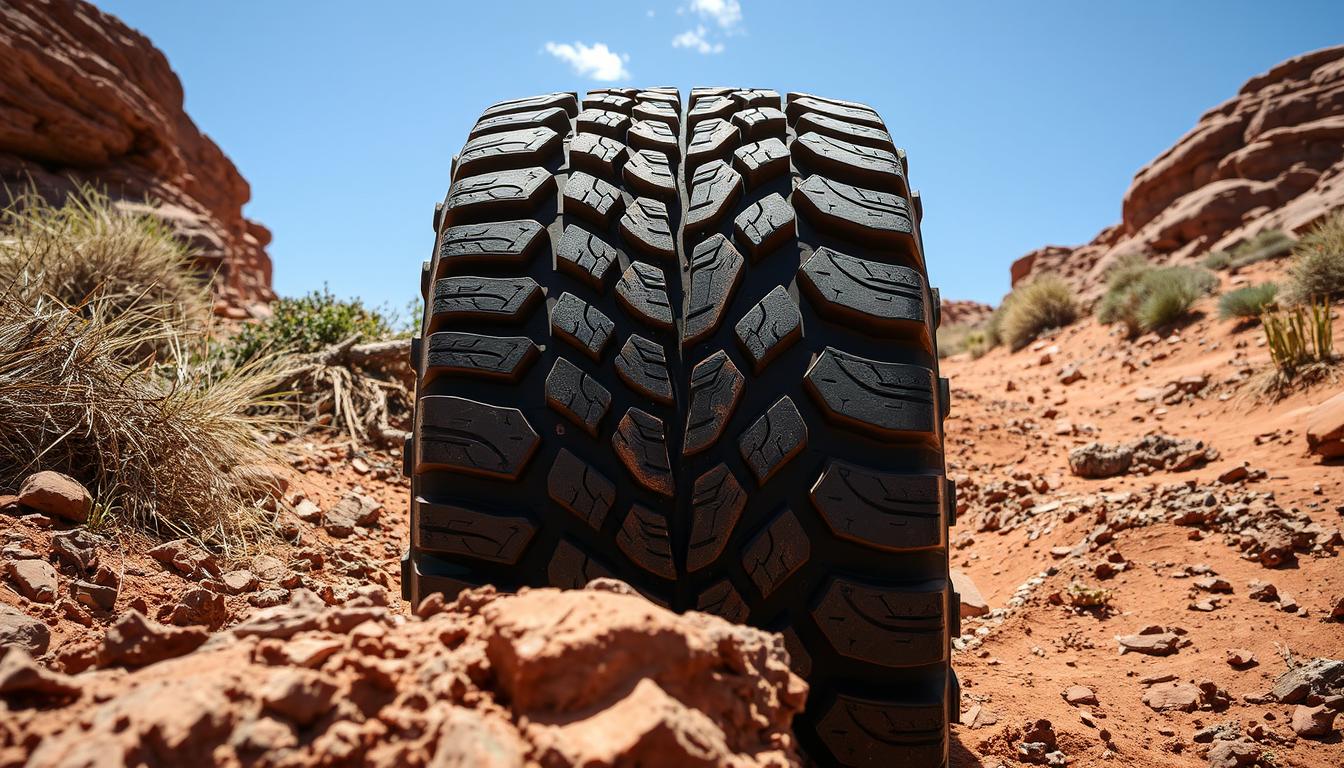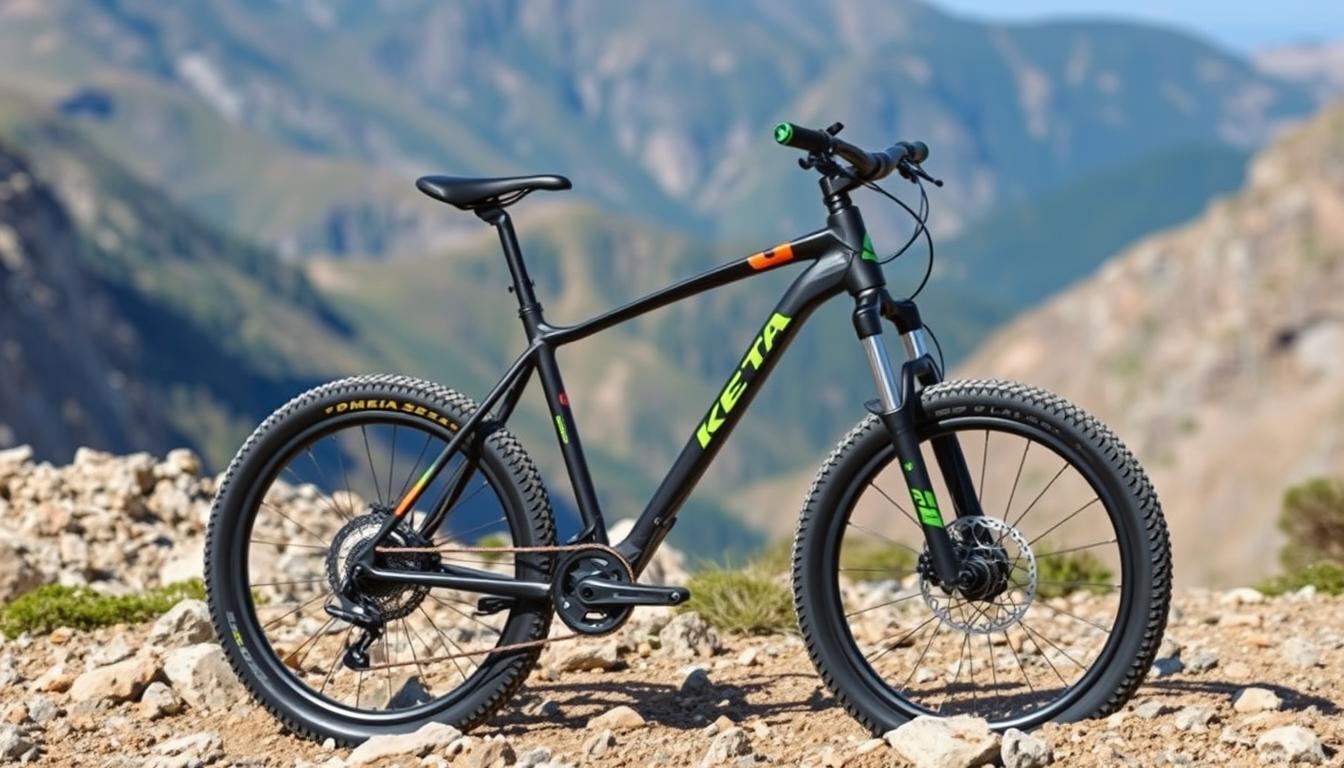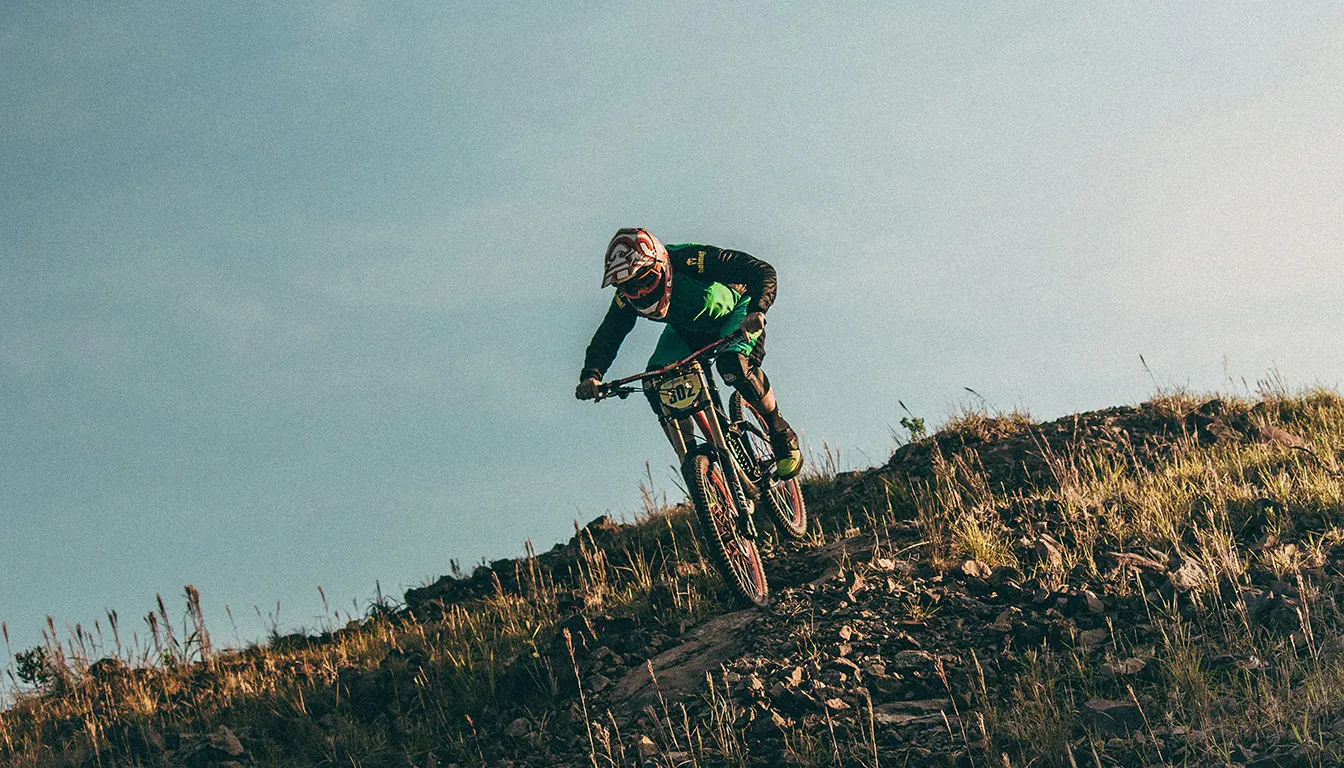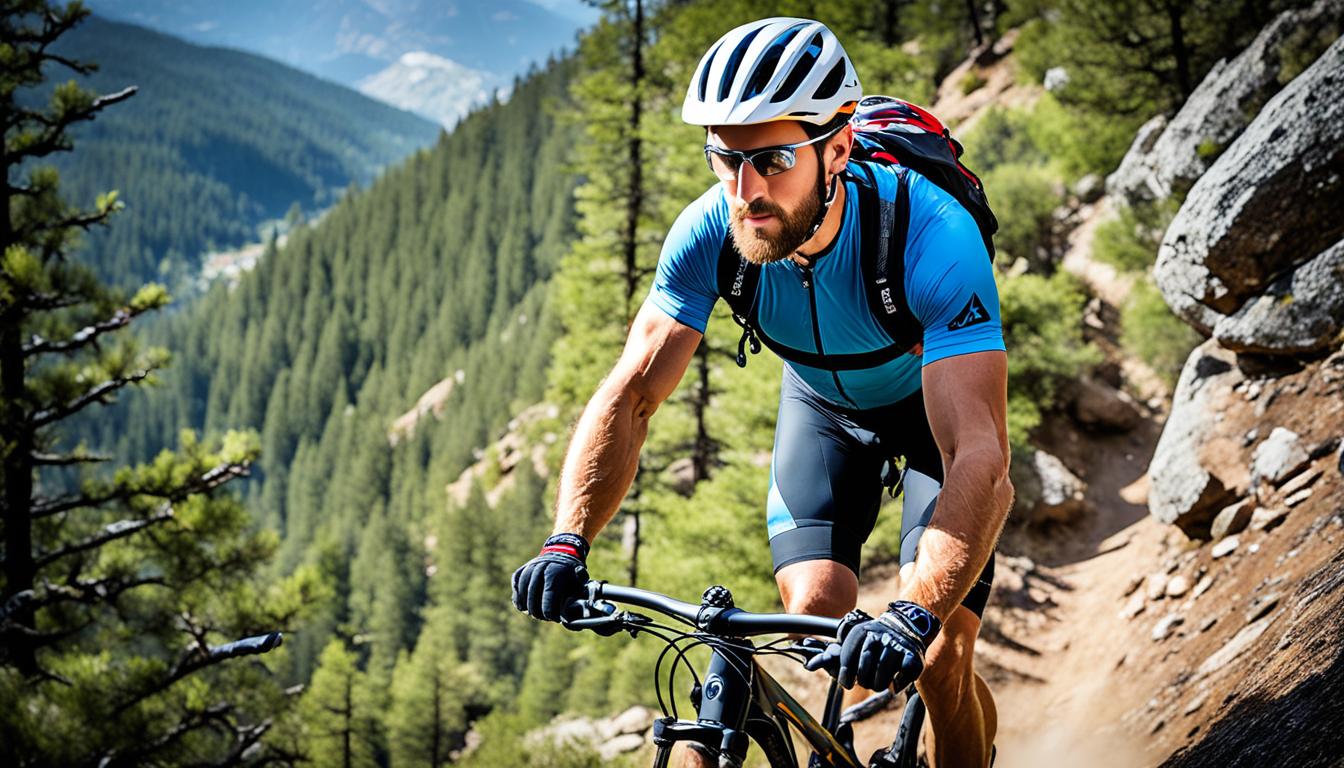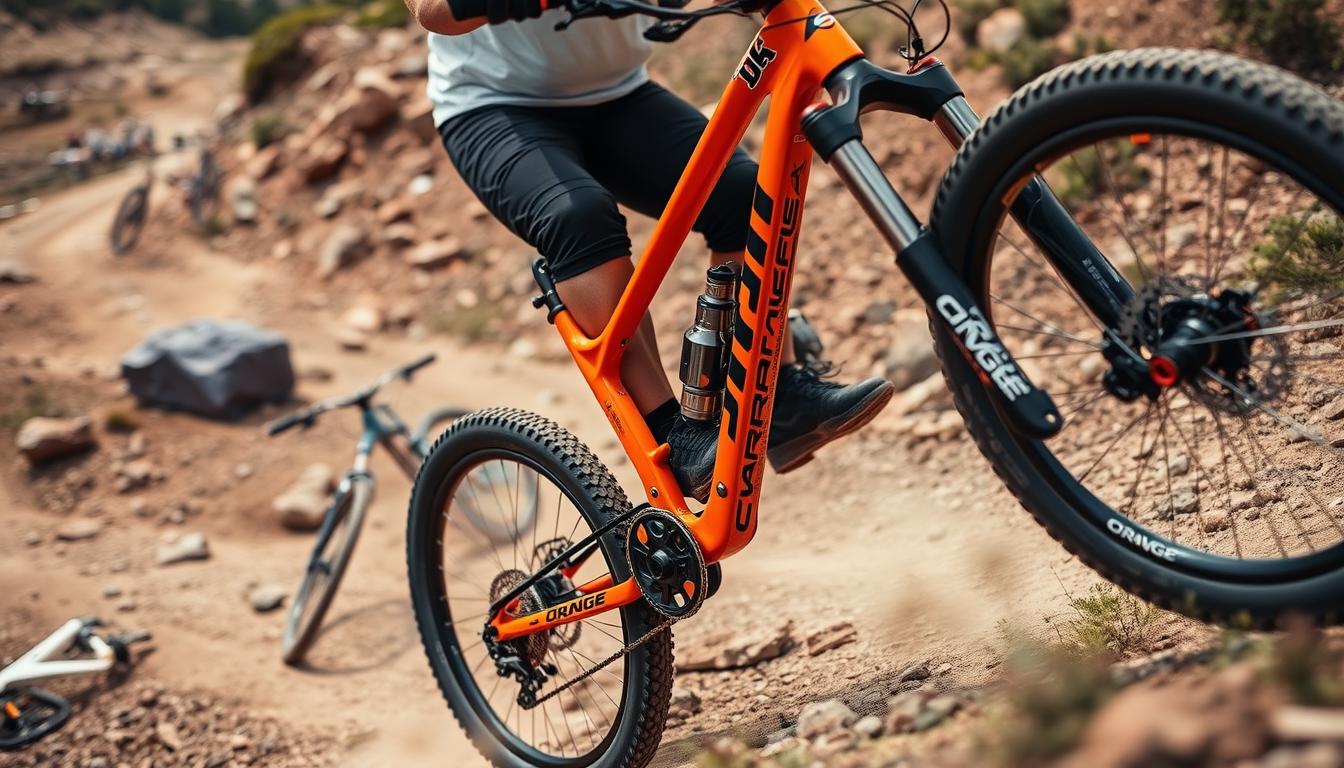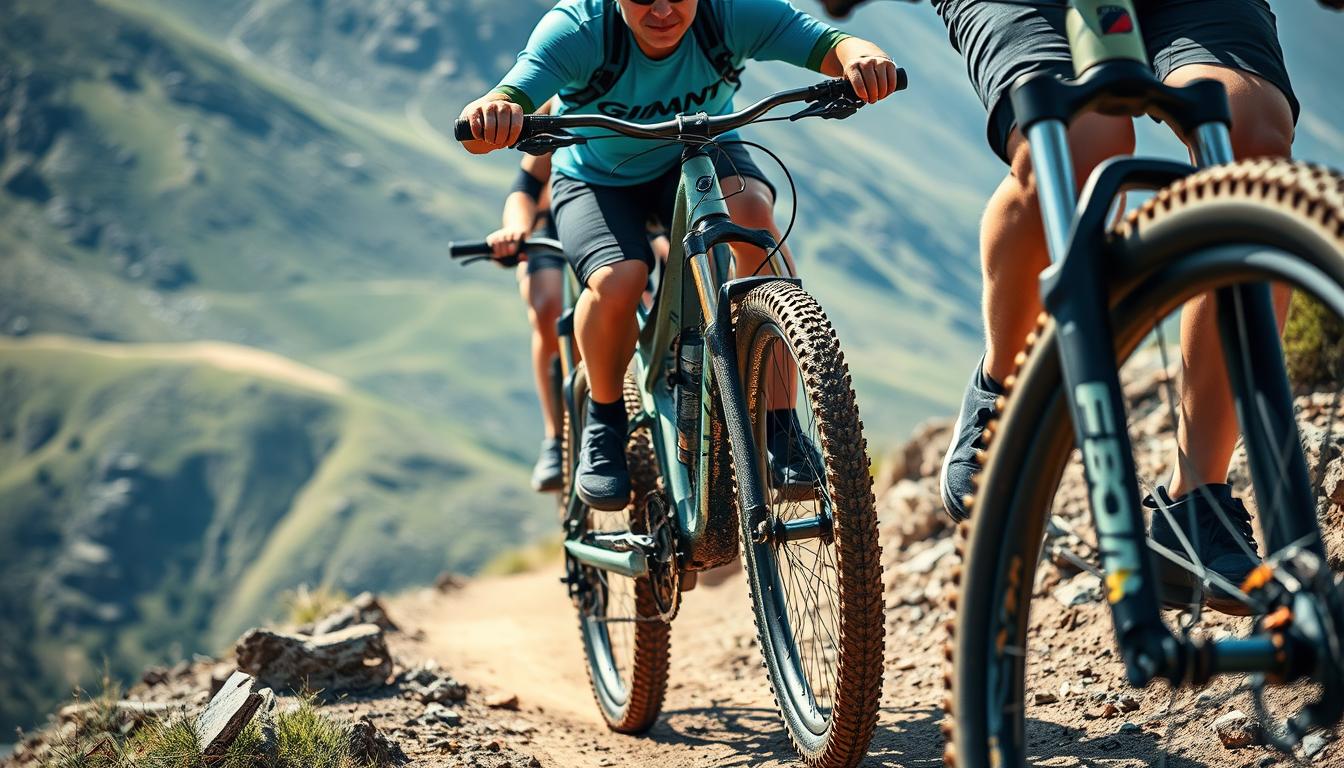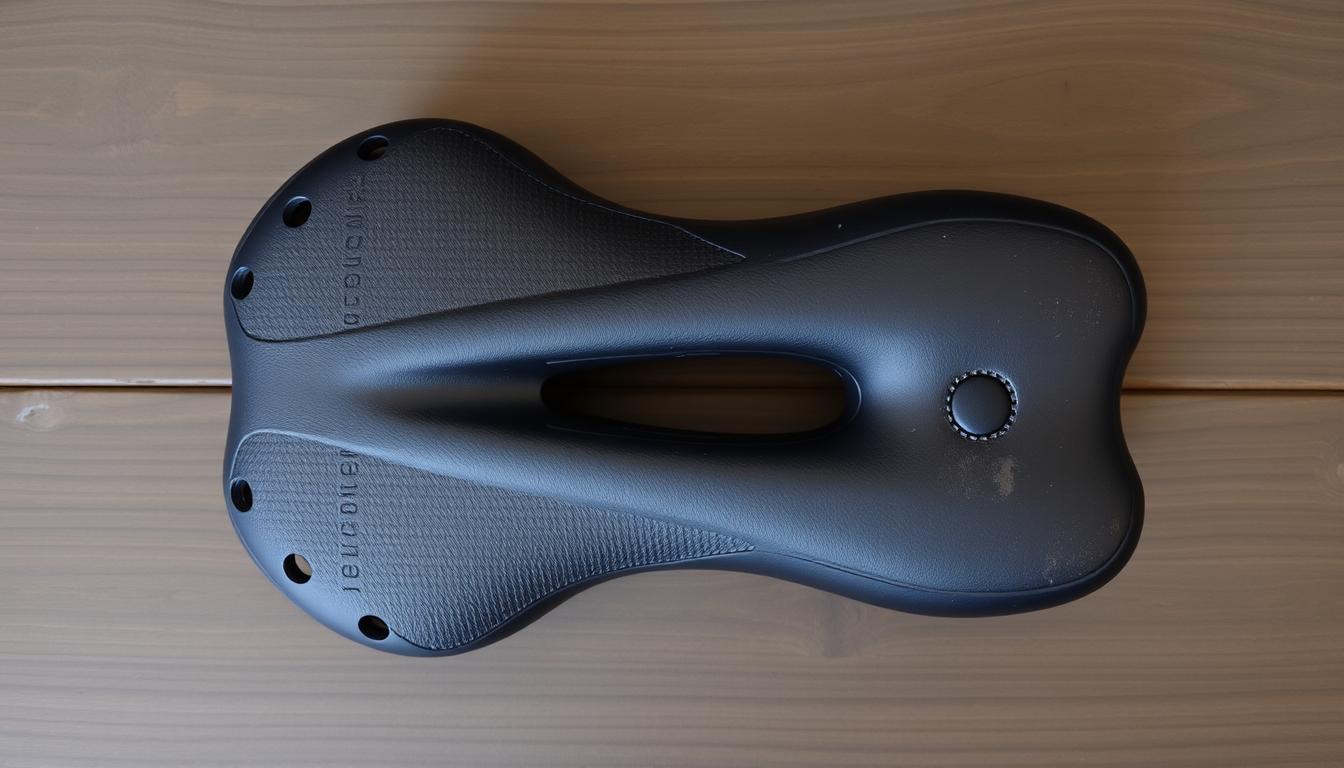Finding the right mountain bike tyres is key for top performance on various terrains. The right tyres boost handling, speed, and safety. Yet, picking them is not simple. You must consider wheel size, tread patterns, and the terrain.
The choice must reflect the specific terrain and your riding habits. With the right tyres, bikers of all levels will enjoy every journey more.
Understanding the Importance of Mountain Bike Tyres
Mountain bike tyres are vital for connecting your bike to the ground. They play a key role in how well you ride. The right tyres improve grip, handling, and speed, making your ride better.
The Role of Tyres in Mountain Biking Performance
Choosing the right tyres affects grip, control, and balance. Front tyres help with steering and braking. They have special patterns for more control. Rear tyres focus on good braking and lower rolling resistance. They have designs that work with different terrains for top performance.
Key Factors Affecting Tyre Selection
Choosing tyres depends on several important factors:
- Riding style: Whether you do cross-country, trail, or downhill affects tyre choice.
- Surface conditions: The type of ground you ride on helps decide the best tyre.
- Tyre width and profile: Wide tyres give more grip and balance. Narrow tyres are faster on smooth surfaces.
- Rubber compounds: Soft rubber sticks to the ground better. Hard rubber lasts longer on hard surfaces.
Knowing these factors helps riders choose the right tyres, improving their mountain biking.
Types of Mountain Bike Tyres for Varied Terrains
Knowing the different mountain bike tyres is key for top performance and safety. Each type is made for certain riding styles. This lets riders handle all sorts of terrains, from smooth to rough. Let’s look at the tyre varieties you can find today.
Cross-Country Tyres: Optimised for Speed
Cross-country tyres are light and narrow, about 1.9″ to 2.25″ wide. They’re fast and make riding on smooth trails easy. They cut down on rolling resistance. This means you can go faster without much effort. For those who love speeding through cross-country trails, these tyres are perfect.
Trail Tyres: Versatility for All Conditions
Trail tyres strike a great balance between grip and lasting use. Their width varies from 2.25″ to 2.6″. This makes them great for different kinds of terrains, whether it’s dusty paths or muddy tracks. They’re reliable in all weather conditions. For more advice on choosing tyres for various terrains, see this useful guide.
Enduro and Downhill Tyres: Grip and Durability
For tougher riding like enduro and downhill, you need strong grip and durability. These tyres are wider, around 2.4″ to 2.6″, giving better traction on steep descents. They’re made tough, with technology to avoid punctures on rough terrains. This ensures riders can keep control on steep and tricky paths.
Choosing the Right Size and Width for Your Tyres
Choosing the right mountain bike tyre size and width improves your ride. Bikes have wheel diameters of 26”, 27.5”, or 29”. Knowing about these sizes aids in selecting suitable tyres. Larger wheels are speedy and roll over obstacles better, preferred by many cyclists.
Understanding Wheel Size: 26”, 27.5”, and 29”
Wheel diameter significantly affects bike performance, suiting different styles and terrains.
- 26” wheels give a classic feel and agile handling on twisty trails.
- 27.5” wheels balance speed with stability, good for various terrains.
- 29” wheels are great for maintaining speed and smoothing out bumps.
Measuring Tyre Width: Finding the Perfect Fit
Tyre width is key for comfort and grip. Cross-country tyres are usually 2.0 to 2.3 inches, for speed and control. Experts like Nino Schurter prefer around 2.4 inches width for extra traction. Trail and enduro tyres range from 2.4 to 2.5 inches, chosen by pros like Greg Minnaar and Sam Hill for better stability.
Regular riders often go for tyre widths between 2.35” and 2.6”. The wider ones boost confidence on tough trails. Though wider tyres grip better, they might be heavier by about 100-200 grams. Matching tyre size to wheel diameter is crucial for the best ride quality.
Tread Patterns and Their Impact on Performance
Choosing the right tyre tread patterns is key for better mountain biking. Different tread zones help with traction and rolling resistance, making rides better on various terrains.
Understanding Tread Zones: Centre, Transition, and Cornering
Tyre treads have zones that impact how a bike performs. The centre zone is smooth or has closely spaced patterns for faster rolling. It’s great for cross-country riding, where speed matters. The transition zone has bigger knobs for better grip in turns. It makes moving into corners smoother. Finally, the cornering zone features large knobs for top traction and confident cornering, even on tough tracks.
How Tread Design Affects Traction and Rolling Resistance
Different tread designs have big effects on traction and rolling resistance. For instance, the Maxxis Minion DHF is great for cornering grip, perfect for bold rides. The Schwalbe Racing Ralph is all about speed with its semi-slick design for less resistance. The Continental Trail King offers an open tread for good traction, wet or dry. Choosing the right tread for your ride can really boost control and performance on rough trails. Wider, aggressive treads are best for muddy areas, while smoother ones work well on hard-pack.
Conclusion
When choosing tyres for mountain biking, picking the right ones makes a big difference. You can improve how well you do on various grounds. Whether it’s fast rolling tyres for smooth paths or mud tyres for wet weather, the right choice matters. Each tyre is made for certain conditions, like knobby tyres for mixed grounds or rock grip tyres for rocky paths.
Tyre size, width, and tread patterns are very important. They affect how your bike moves and stops. By looking at different tyre types and tread designs, you can choose the best for your ride. This could mean easier climbs or safer downhill rides.
Choosing the right mountain bike tyres makes riding safer and more fun. Spending time to pick the right tyres improves your performance and confidence outdoors. It lets you enjoy your adventures more.
FAQ
Why are mountain bike tyres important for performance?
Mountain bike tyres are key because they connect your bike to the land. The right tyres boost grip, make handling better, and cut rolling resistance. This greatly betters your biking joy.
How do I select the right tyre size for my mountain bike?
Start by looking at your bike’s current tyres to see their size. You’ll mostly find wheel sizes like 26”, 27.5”, or 29”. Tyre width changes how comfy your ride is and affects rolling resistance. Cross-country bikes use tyres from 2.0 to 2.3 inches wide. But, for trail and enduro, wider tyres work best.
What are the different types of mountain bike tyres available?
You’ll find tyres made for certain conditions. Cross-country tyres are built for speed on easy trails. Trail tyres work well on different grounds. Enduro and downhill tyres are about strong grip and stopping punctures, perfect for rough riding.
How do tread patterns affect my bike’s performance?
Tread pattern has a big role in how your bike acts. The centre zone is for speed; the transition zone helps with cornering. The cornering zone is crucial for grip while turning. Picking the right tread, like wide knobs for mud or smooth patterns for hard dirt, ups your biking skills.
What factors should I consider when choosing mountain bike tyres?
Think about how you ride, such as cross-country or trail. Also, consider wheel size, tyre width, and where you’ll be biking. These choices greatly affect how well your bike performs and how good your ride feels.
How can I improve my riding efficiency with the right tyres?
Knowing about tyre types, sizes, and treads helps you pick wisely. This leads to better efficiency, safety, and fun on your rides. Choosing tyres meant for your usual trails really changes your performance.
